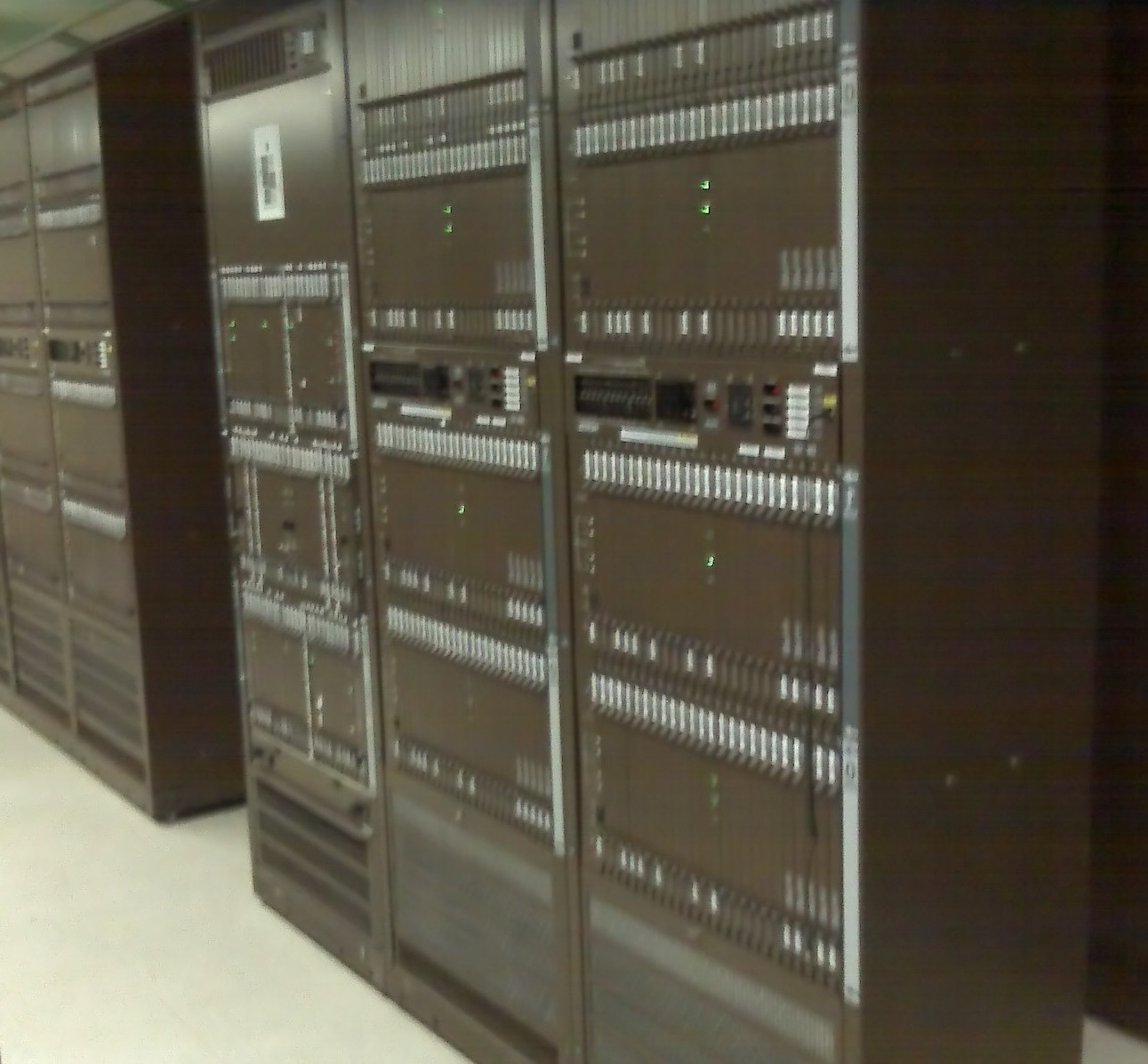|
Emergency Stand Alone
Emergency Stand Alone (ESA) is a term used by the vendors of telephone equipment such as Nortel DMS-100 The DMS-100 is a member of the Digital Multiplex System (DMS) product line of telephone exchange switches manufactured by Northern Telecom. Designed during the 1970s and released in 1979, it can control 100,000 telephone lines. The purpose of th ..., Lucent 5ESS or GTD-5. Typically, small towns or communities have telephone services provided from a "remote switching unit" which is controlled by the more powerful host switching complex. ESA occurs when the host/remote links are severed, thus leaving the region in “community isolation”. While in the ESA mode, the town/community is limited to only receiving or placing calls within that community/town. Larger towns/regions may have several remote switching units which required “backdoor trunking” to connect all remote units during ESA within the same town/community. Special translations can be implemented to allow 911 t ... [...More Info...] [...Related Items...] OR: [Wikipedia] [Google] [Baidu] |
DMS-100
The DMS-100 is a member of the Digital Multiplex System (DMS) product line of telephone exchange switches manufactured by Northern Telecom. Designed during the 1970s and released in 1979, it can control 100,000 telephone lines. The purpose of the DMS-100 Switch is to provide local service and connections to the PSTN public telephone network. It is designed to deliver services over subscribers' telephone lines and trunks. It provides plain old telephone service (POTS), mobility management for cellular phone systems, sophisticated business services such as automatic call distribution (ACD), Integrated Services Digital Network (ISDN), and Meridian Digital Centrex (MDC), formerly called Integrated Business Network (IBN). It also provides Intelligent Network functions (AIN, CS1-R, ETSI INAP). It is used in countries throughout the world. There are also DMS-200 and DMS-250 variants for tandem switches. Much of the hardware used in the DMS-100, with the possible exception of the line ... [...More Info...] [...Related Items...] OR: [Wikipedia] [Google] [Baidu] |
Multiplexing
In telecommunications and computer networking, multiplexing (sometimes contracted to muxing) is a method by which multiple analog or digital signals are combined into one signal over a shared medium. The aim is to share a scarce resource - a physical transmission medium. For example, in telecommunications, several telephone calls may be carried using one wire. Multiplexing originated in telegraphy in the 1870s, and is now widely applied in communications. In telephony, George Owen Squier is credited with the development of telephone carrier multiplexing in 1910. The multiplexed signal is transmitted over a communication channel such as a cable. The multiplexing divides the capacity of the communication channel into several logical channels, one for each message signal or data stream to be transferred. A reverse process, known as demultiplexing, extracts the original channels on the receiver end. A device that performs the multiplexing is called a multiplexer (MUX), and a dev ... [...More Info...] [...Related Items...] OR: [Wikipedia] [Google] [Baidu] |
